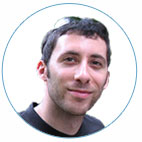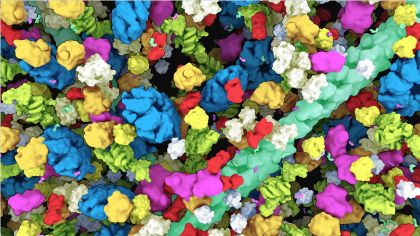
Medical Illustrator,
Freelancer
CAREER PROFILE
Please introduce yourself. What is your current training/educational status and/or where do you work? How did you decide to get into scientific visualization?
I got into scientific visualization because at one point I was a researcher and the output of my research work was very visual. At the same time, my hobby was exploring 3D software, particularly Maya. I applied (and was accepted) to the Biomedical Communications (BMC) program at the University of Toronto looking to combine my research background with my interest in 3D animation.
What do you like the most about this field?
For me, it is the best of two worlds. I’m inspired by science and nature and I’m inspired by art. In this industry, you get to be involved in both.
How and where did you acquire your current skillset in scientific visualization? Was it all via a graduate or other program or are you self taught? If so, did you use any particular online resources to help with your training?
In terms of artistic fundamentals, my only formal training came from the BMC program and a couple art classes I had taken the year before that. But I was always the type to play around with software, and many programs I learned on my own. Digital Tutors is a great go-to website for creative software that I use constantly. Two other websites that I really enjoy are Greyscalegorilla and Video Copilot, both of which offer high-quality (and free!) motion graphics tutorials.

What do you consider some of the biggest barriers to entering the field? Are they technical, training, scientific, professional (availability of jobs or projects)?
It is a field that may require a lot of persistence. Scientific visualization is a growing field, but it is still very small. As a result, many people do not know about the field at all, let alone what kind of work it actually entails. So it may require a lot of explanation to clients who would benefit from your skillset. Freelance work is always a possibility, but stable, full-time jobs tend to be limited in both quantity and geographic areas.
Which practitioners (or what visualizations) have been most inspirational to you?
My greatest inspiration comes from animated feature films, including but not limited to films by Pixar, Disney, Hayao Miyazaki, and Satoshi Kon. They all have expert storytelling and attention to detail. Both of these components are also necessary to create accurate and engaging scientific visualizations.
Which conferences would you recommend to those interested in this field and why? What particular insights or benefits did you get out of attending this (these) conferences?
The most relevant conferences that I have attended in this field are the Association of Medical Illustrators (AMI) conference and VIZBI. The former is more focused on visualization of medicine and the latter on molecular data, but neither is exclusive to only those topics, and both are great for networking. Everyone in this field is passionate and comes from different backgrounds, so there is always new insight to be gained.

Please comment briefly on the samples/links that you have submitted for this profile… why in particular are you proud of these and what do you hope viewers will notice and get from seeing them?
“A Molecular Journey through Space and Time” was my master’s research project. It was the first time I had created an animation of that scale. It really opened my eyes to how much work goes into the entire pipeline, from initial concept to final version. My hope is that the animation helps clarify some overall concepts about how the different components of cells relate to each other.
“Fractal Visualizations” was a really fun side project for me. I can’t say linear algebra was my favorite subject to learn in school, but this is an application where I actually wanted to relearn it so that I could visualize what is possible with it. It’s not science per se, but science is possible because of math, and mathematics can produce beautiful results.
Where do you think the field scientific visualization is ‘going’? Do you perceive any trends in its evolution or are there certain directions that you would like to see implemented?
There has been a huge technological shift in the industry in just the past few years. Whereas the industry started out with more traditional artwork, having experience with programming is becoming more and more essential. In my opinion, I would like to see a more widespread representation of all science topics. The most represented fields in scientific visualization are medicine and biology, but physics, engineering, and math are all equally inspirational.
And then lets end with a simple question… What is your ‘10 year plan’ in terms of what you hope to accomplish in scientific visualization?
Not a simple question at all! I don’t know where I see myself in 10 years. It could be any number of different paths. All I really want is to make science inspiring and accessible in any way that I can.
Portfolio Link:http://www.andrewtubelli.com
